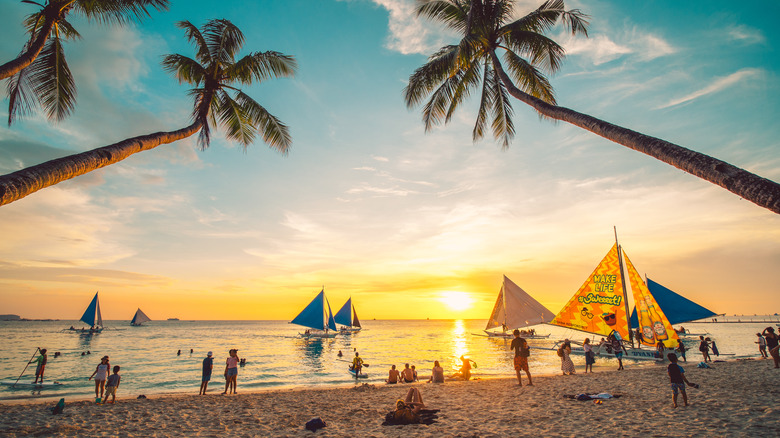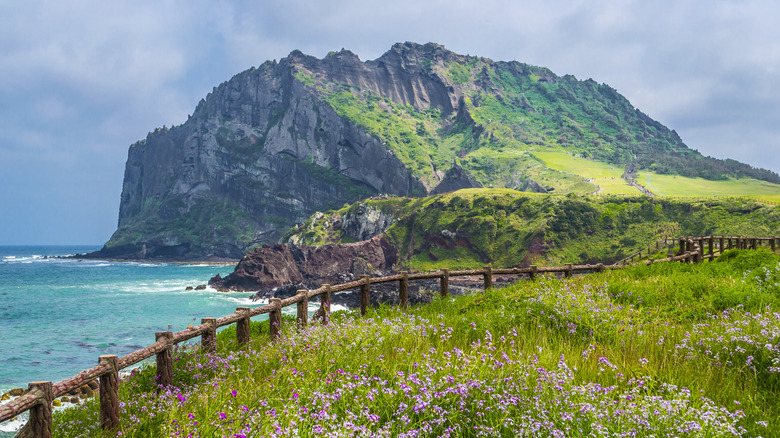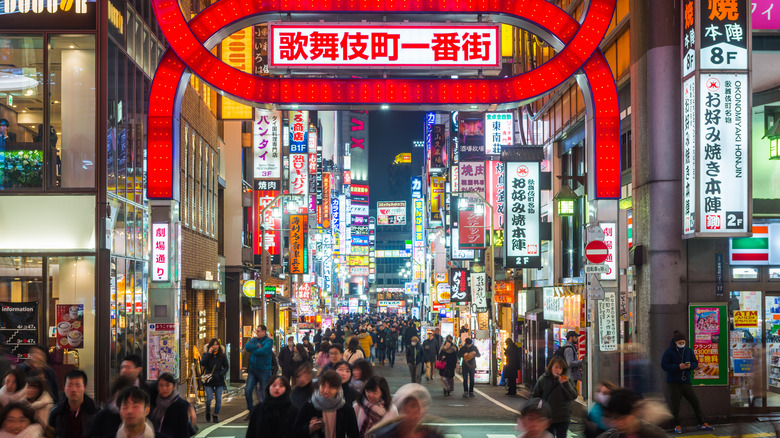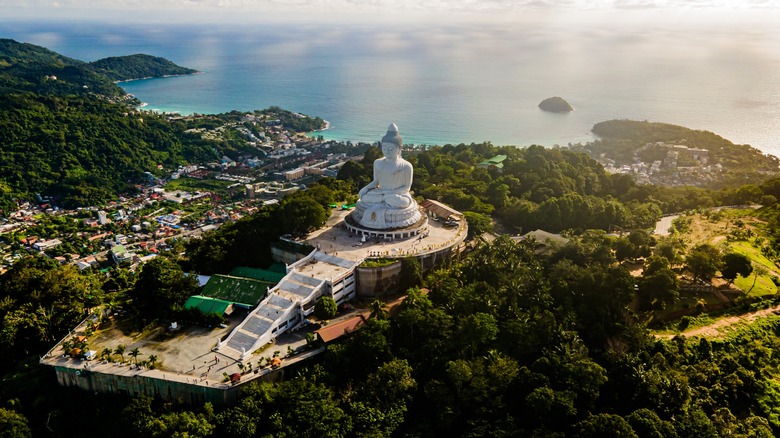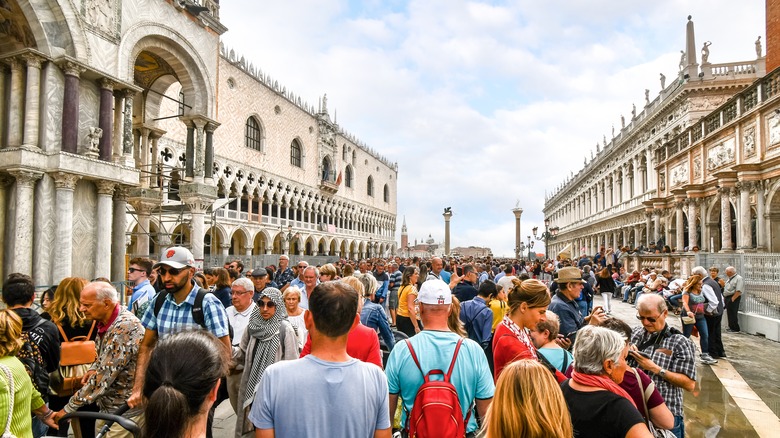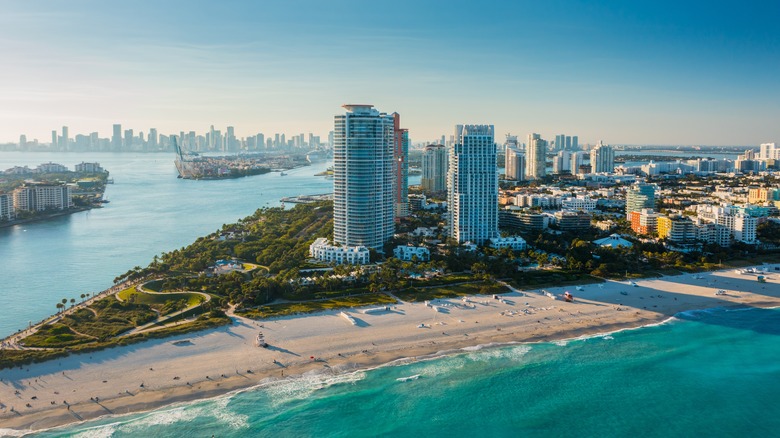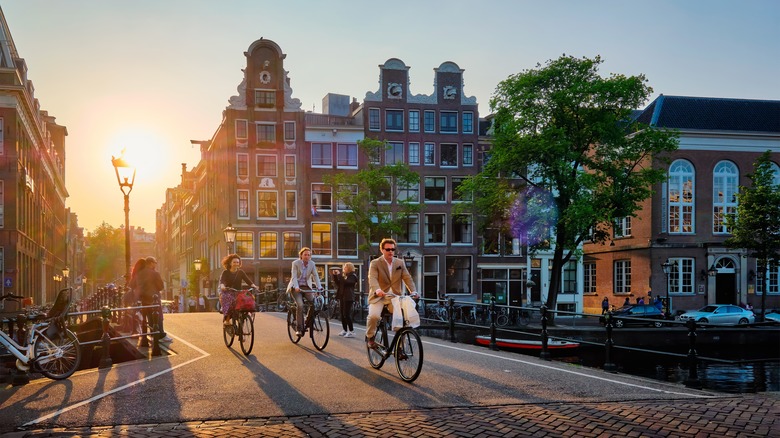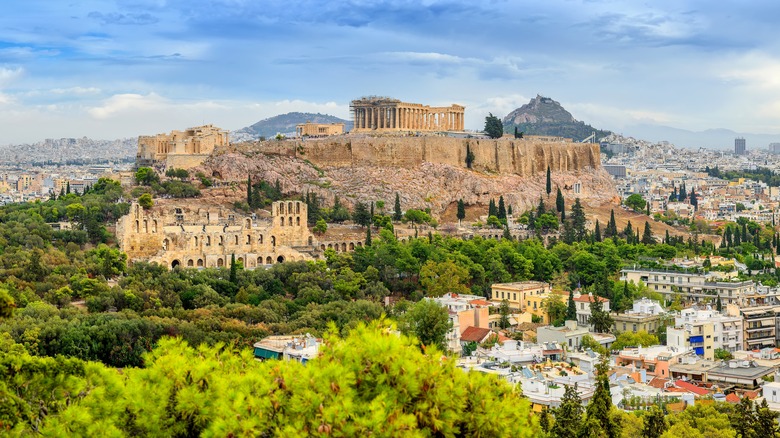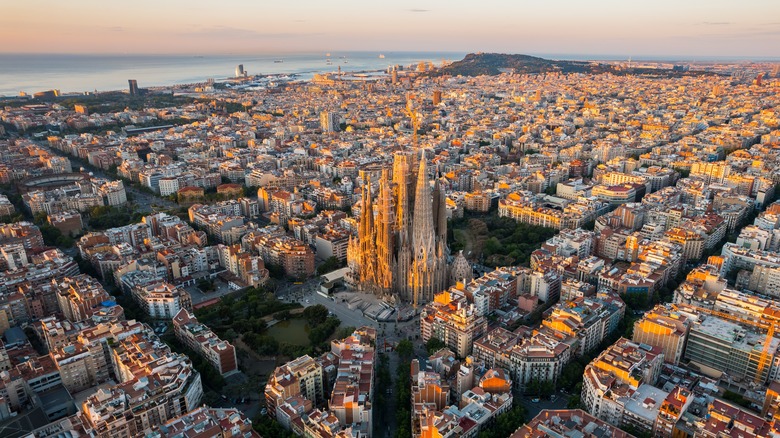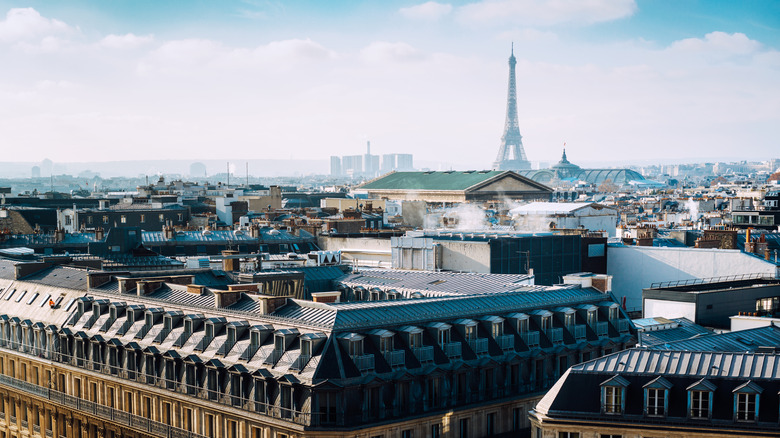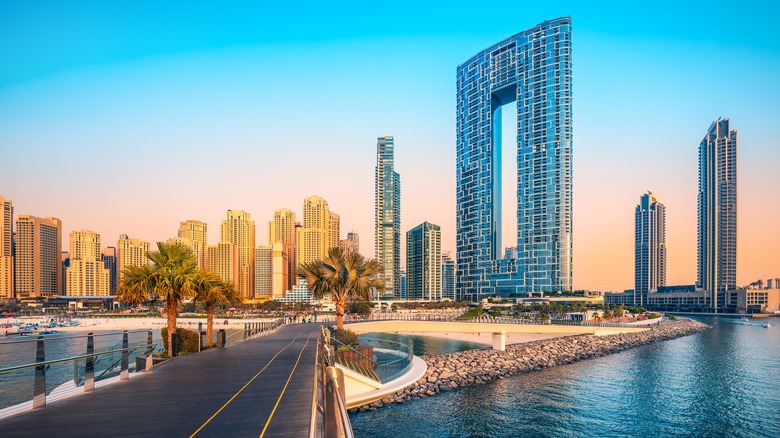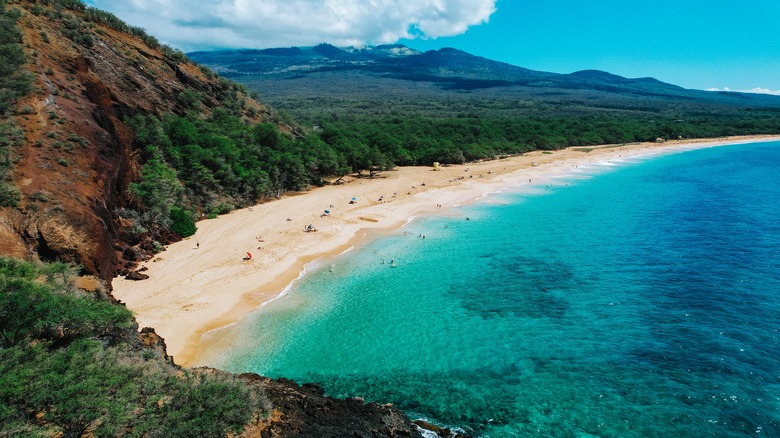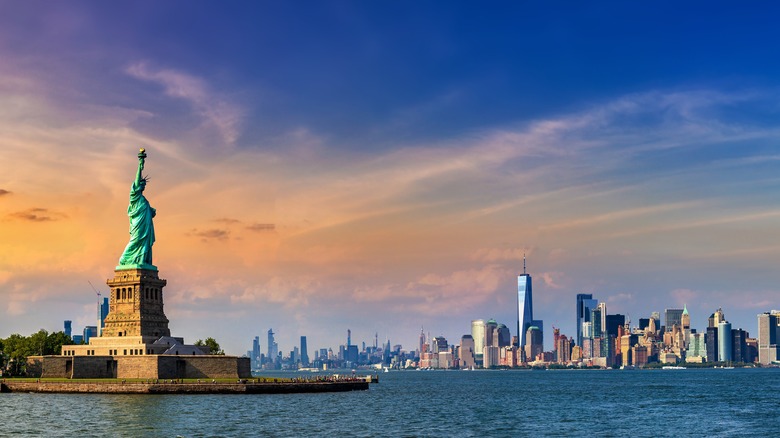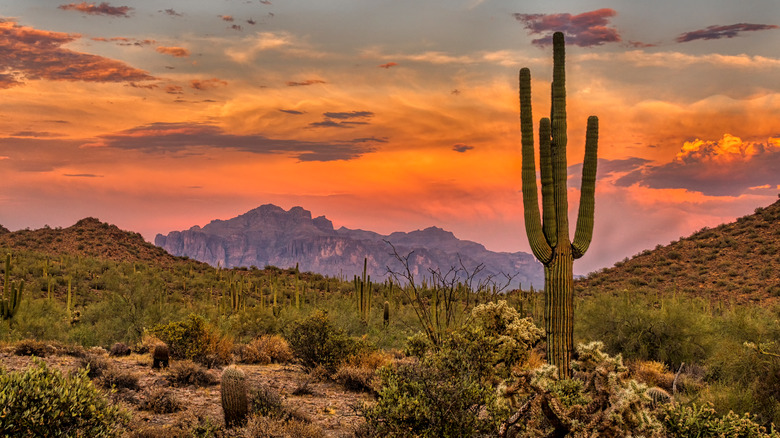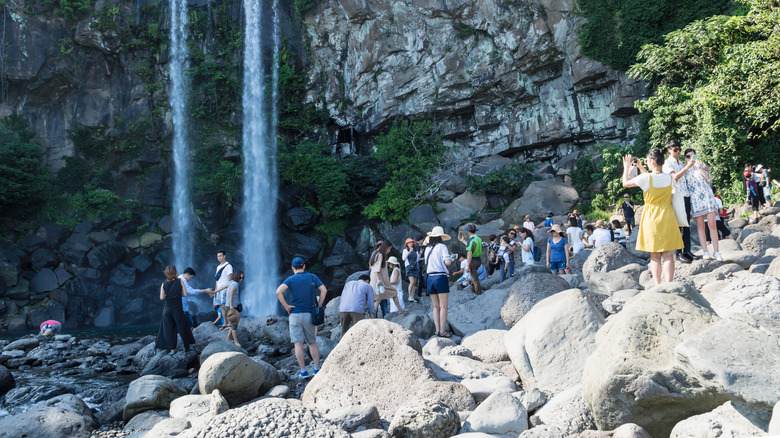15 Places You Should Never Visit In Summer
Summer vacation, here we come. It's finally starting to look like the nightmare that was the pandemic is in the rear-view mirror. Mask mandates are long gone. COVID-19 test entry requirements are no longer making ticket purchases a game of Russian Roulette. Revenge travel blew the world open wide. Like any nightmare, the memory of the pandemic has begun to fade. Life has largely returned to normal, making that summer vacation you've yearned for possible at last. Hold your horses, though. Even with changing times, you might want to reconsider visiting particular places in the summertime.
In early 2024, major news outlets such as Forbes alleged that revenge travel had only begun to spread its wings. According to an IATA press release from late 2023, the airline industry expected an increasing number of travelers the following year. Airports and the travel industry have found themselves woefully understaffed. Even air traffic control towers continue to face a dangerously low workforce.
If social media's any indication, people are so besotted with travel that it's become a rat race to fill every red second of PTO with globe-spanning trips. So, if you thought summer would bring ultra-low prices, high vacancies, and uncrowded tourist destinations, you were wrong. And even if the aftermath of the pandemic and climate woes were not factors, there are some locales you really don't want to experience between June and August.
Boracay, Philippines
When people think of the Philippines, they likely think of Boracay's heavenly white sand, transparent blue waters, and coconut-laden palm trees. If you're contemplating Boracay for the upcoming summer, though, maybe take a rain check. Its pleasant "Habagat" rainy season runs from June to September, but the main reason to avoid it is overcrowding, even after former President Duterte's efforts to pare it down.
Boracay is a relatively tiny island with a primary 2.5-mile (4-kilometer) beach where you'll find most restaurants, water activities, and amenities. Dubbed "White Beach," this stretch of white sand is divided up into stations 0 through 3 – 0 being luxury private resorts and 3 being the cheapest. The uber-luxury Station 0 is the only segment where you'll find peace.
Stations 1-3 comprise a cramped beachfront area packed with summer tourists, hawkers selling boat tours, and busy restaurants and bars. Sidestreets are much of the same unless you stray far from the beach — at which point you're not enjoying the main reason you came there. At night, the clubs come alive by blasting ear-splitting music, and already obnoxious tourists lose what little sense they had. Then there's the algae bloom, which, from personal experience, continues into summer and will ruin your expectation of transparent water. Come to Boracay at a different time.
Jeju Island, South Korea
Think of Jeju Island as South Korea's Hawaii. It's an island paradise off the country's southern coast with excellent beaches and Korea's tallest summit. The oceanside hikes are to die for. Just please, please don't go in the summer.
First, Jeju is notoriously overcrowded. The infrastructure cannot support the influx of tourists, with locals clamoring for an entry tax. Visitors to the island during the summer months will be dismayed to find all the best beaches stuffed to the gills, and taking a bus feels like riding on one of those Japanese trains where they pack you in by hand. Peace and quiet exist for only a brief moment in the early morning — between when the clubs close and noisy families rush to secure their spots at the beach.
Second, Jeju Island is brutishly hot, using experience as a guide. Those ocean breezes can only do so much, so prepare to hide in the shade or a beachfront cafe. Overburdened buses with underpowered A/C feel like ovens. Worst of all, you'll miss Korea's stunning white cherry blossom season during this period, which hits Jeju in late March. Save a trip to Jeju for a better period.
Tokyo, Japan
Tokyo needs no introduction; however, don't fall prey to the assumption that Japan is just kawaii and ramen; the best things to do in Tokyo appeal to all. You'll never visit a city more polite, meticulously clean, or safe. It's looking good so far, right? There are just a couple of flies in the ointment.
Japan, particularly Tokyo, is murderously hot. Relative humidity can hit an average of 76% in July. From personal experience, walking around in this city during summer is a nonstarter. You'll sweat out of every pore. Tokyo had the unfortunate distinction of being the worst summer Olympics location in history on account of the foul summer weather, according to CNN. Like many places worldwide, its recent summers have been some of the hottest ever.
Then there's the overcrowding. Tokyo is already Japan's most densely-populated urban center, but tourism takes it to another level. The problem is so bad that the only real solution for Japanese authorities is to bleed tourists away from the nation's capital to lesser-known locations. Japan's tourist boom may be in the spring, but with heat being the biggest factor, we can't recommend going during the summer.
Bali, Indonesia
For a time, Bali was Australia's best-kept secret. It's been its "Hawaii," to continue the analogy, since the 1970s. Some argue that what really put Bali on the map was the movie "Eat, Pray, Love," in which Julia Roberts does some soul-searching on the Indonesian island — though others would argue it was a rise in Chinese tourism and increased Western transit to East Asia. Whatever the cause, Bali went from being a relatively hidden gem to a must-visit. And, as you can probably guess, it's not recommended come June.
Peak travel season is summer, exacerbating some of Bali's most infamous problems. The first is traffic, which is so bad that The Bali Sun recommended giving yourself double the time it would typically take to reach a destination. Then there's the water shortage, one guaranteed to worsen as tourism rebounds. Overtourism has been bad for a while already, and Bali's government is making moves to promote sustainable, "high-quality" tourism, i.e., targeting wealthier tourists. Add Bali's sweltering heat during the wet season and the propensity for typhoons, and it's clear you're better off going in the shoulder months of March and November.
Phuket, Thailand
Overcrowded can seem relative, so let's get into some hard statistics. Phuket was hands down one of the most crowded tourist destinations on Earth in 2023, according to MoneyTransfers.com (via The New Indian Express). For reference, that's 118.5 tourists per local inhabitant. Thailand as a whole actually took the first three spots, with Pattaya and Krabi next in line. Phuket, like the other Southeast Asian destinations mentioned on this list, is endowed with peerless tropical beaches, great food, and relatively cheap travel costs. It's an easy equation for any traveler and slingshotted Thailand into a stratospheric tourism boom.
Thailand authorities love this tourism (mostly) and, like their counterparts in Bali, are striving toward that same "high-quality" tourism. In this case, that means focusing more on families, older individuals, and remote workers, according to TAT News. The crowds are probably only going to get bigger. Aside from that, Thailand's monsoon season — as in endless pouring rain and frequent flooding — kicks off in July and closes out in September. Mark Phuket on your calendars for another time.
Venice, Italy
Venice is sinking. "This is far from hyperbole," wrote Joseph Phelan of BBC, "Venice is at very real risk of being consumed by the sea. In worst-case scenario, the city could disappear beneath the waves by as early as 2100." The Italian government is rushing to keep the city from drowning, a prohibitively expensive and challenging process that may not even bear fruit. The travel sphere has taken one message away from this: visit Venice before it disappears. The resulting overtourism cannot be exaggerated, and it's only compounding Venice's problem, according to The Guardian. With 30 million visitors yearly, they've got their work cut out for them.
Venice is a busy place year-round, with June bringing its peak numbers. But that's not all. Visitors report that it's just too stinking hot. Lagoons aren't like beaches, so there's no comforting ocean breeze to dry your sweat. The cobblestones and limestone buildings gather and radiate a noticeable amount of heat. Plus, the streets and bridges are narrow, so even a moderate crowd will feel like a crush.
Miami, Florida
Miami's reputation depends on whom you ask. For some, the Cuban zest and Caribbean-facing beaches are enough to seal the deal. For others, Florida as a whole might as well be a no-fly zone. The weather is the obvious first reason you should plan your visit there outside of the summer months; the humid heat can be intolerable, and if it's not hot, it's stormy. Hurricane season starts in June, too, so the last thing you want is to buy tickets in advance without knowing if Mother Nature's about to get violent.
The Greater Miami Convention & Visitors Bureau reported that 2022 was a "home run" in terms of tourism, with the cruise lines making a "triumphant return" from the pandemic stagnation that almost undid them. In other words, summer vacation in Miami will likely be busy for the foreseeable future. Then there's the issue of crime. Even though Miami had an occasional dip in crime during some summers, past summers have often been a peak time for criminality. For these reasons, we'd recommend skipping a Miami summer retreat.
Amsterdam, Netherlands
Amsterdam is at war. Not a war with soldiers armed to the teeth, mind, but rather a certain demographic of young British men. Every summer, there's a large influx of young Brits arriving across the channel to Amsterdam to enjoy all the pleasures the city has to offer. Flights are cheap, and Amsterdam has a longstanding reputation for being a city to have fun in. That might not be a problem, except that Amsterdam has experienced a rash of drunken, rowdy behavior that it attributes to this demographic.
The Netherlands is cracking down on this target demographic. In late 2023, Mayor Femke Halsema of Amsterdam told Skift that they established an "alcohol ban, smoking ban, early closing times of catering establishments, [bans against] sleeping in cars and urinating in public." In Halsema's words, though, these restrictions were "unknown to a large part of the target group." In short, their efforts to stem the flow haven't been successful.
This bit alone would be reason enough not to visit in the summer, but there's more. CNN reported that Amsterdam has the highest tourist tax in Europe, one that's increasing in price. If Amsterdam's in your crosshairs, consider pulling the trigger for another season. It's generally less expensive around October to February, anyway.
Athens, Greece
You thought we were done with cities struggling with overtourism and imposing limits on visitors, didn't you? We're just getting started. Greece is a fantastic Mediterranean retreat with excellent food and perhaps the most fascinating ancient history in the world — all of which risks getting spoiled in the summer heat. Like most places around the globe, Greece has been hitting record-high temperatures.
In addition, people are swarming to Greece in droves, so much so that the nation put a daily cap of 20,000 visitors on its iconic Acropolis archeological site. EuroNews says that, before the cap, 23,000 people a day were brushing elbows. So now, it will either be a long line to get into the Acropolis — since there's a per-hour limit on visitors — or other places in Athens will be crowded with tourists who missed their chance. Aside from that, vacancies during summer will be low and prices high. Visiting the Acropolis in Athens, Greece – or anything else in the city — would be preferable around October.
Barcelona, Spain
Amsterdam's not the only one waging a "war" on tourism. So is Barcelona. Except here, it has gone a touch further than putting up signs. Politico relates how the city council imposed a ban preventing the construction of new hospitality establishments in the city center and strict limits on the tourist industry as a whole. Further, they've effectively banned AirBnbs, banned cruise ships from docking near the city center, and canceled at least two plans to expand the airport. Prices were already high during summer, so they'll likely keep climbing.
There's a bit of an anti-tourism sentiment in the city, too, and The New European says there have been instances of graffiti with the words "tourists go home." To be fair to Barcelona residents, tourists can be a pain in the neck. They crowd the city center, raise the cost of living, and, in some cases (such as cruise ship tourists), bring little economic benefit. Add on Barcelona's own record heat waves, and it's probably best to just plan your trip for another season.
Paris, France
Paris might be the gold standard of European destinations for Americans. Or at least, it used to be. There's a growing sentiment online that France's capital is, frankly, overrated. Rude locals, underwhelming monuments (yes, we're talking about the Eiffel Tower), and, of course, the crowds. France has a plan to combat over-tourism like everyone else, albeit less severe than Barcelona. The gist of it seems to be spreading out tourists across the country — in other words, getting them away from Paris. If past "wars" on tourism are any indication, then prices are set to increase.
Aside from that, visiting Paris will start to get tricky. There are now daily caps on visitors to the Louvre, possibly the number one place people visit in the city. Likewise, Paris is suffering from Europe's above-average heat, meaning those sweaty crowds will only get sweatier. There are many things tourists should never do when visiting Paris, including visiting in summer.
Dubai, UAE
Dubai is a controversial travel destination, but it remains trendy. People come for the all-year T-shirt weather and luxury, and that's what they get. There is one good reason not to visit this lonely city on the Arabian Peninsula in summer, though, and it's pretty straightforward: the heat.
Gulf weather is no laughing matter. Dubai summers can reach 50.1 degrees Celcius, or 122 degrees Fahrenheit. Streets are effectively deserted during the day since living in this place without A/C is virtually impossible. To make matters worse, the "real-feel" temperature (how a temperature feels versus its thermometer reading) during the summer highs is estimated to be 55-60 degrees Celcius, or 131-140 degrees Fahrenheit, according to VOA News.
Heat in the Gulf could eventually climb to levels that surpass human survivability. Humid conditions at just 35 degrees Celcius prevent a healthy human from being able to regulate temperature by sweating, according to CBC. Too long beyond that threshold and the consequences could be deadly. People may suffer life-threatening heat stroke, heat exhaustion, or worse — especially in vulnerable populations with pre-existing conditions (via the United States Environmental Protection Agency). Having good personal health and fitness doesn't mean you'll be fine with some sunscreen and a bottle of cold water. Skip Dubai for your summer trip, ladies and gentlemen.
Hawaii, USA
Hawaiians want you to stop visiting Hawaii. "We're asking for just a pause," Michael Victorino, the mayor of Maui County, told Business Insider. "We don't have the authority to say stop, but we're asking the powers to be to help us." He said this after overtourism to the island chain, according to EuroNews, which caused locals to pay extra for their water utility bill, get stuck in traffic thanks to rental car drivers, and suffer absurdly long wait times at the average restaurant. It doesn't help that things in Hawaii are getting increasingly expensive, so much so that even Hawaii's iconic symbol, the lei, is in short supply.
Hawaii has always been the de facto summer and winter vacation, and Hawaiian Airlines warns of high prices during these peak seasons. Change your trip to spring or fall, except Thanksgiving. You'll probably have a much better time when masses of people, supply issues, and exorbitant prices don't spoil your perfect summer beach vacation.
New York City, New York
The Big Apple is a place everyone should see at least once. Millions of tourists pour into this city every year, especially during the summer. We imagine that quite a few of them get a bit disillusioned. New York has a legendarily bad subway system, ever-increasing taxi fares, and an escalating amount of hate crimes against minorities. Summer is the city's busy season, so those problems get ten times worse — and, you guessed it, New York is suffering the same dreadful heat waves as everywhere else.
It's a shame since you'll never see a more multicultural place with many wonderful things to do. And we're not saying that just as outsiders who don't know the place well. Even locals advise against coming in the summer. Prices are naturally higher, and the ousting of Airbnb is not good news for those looking for cheap accommodations and lots of vacancies. New York is an excellent destination during other seasons — including winter — so avoid a summer visit.
Phoenix, Arizona
Remember what we said about Dubai? The same more or less applies to Arizona. Natives to the Sonoran Desert know all too well that summer is to be waited out inside, under the cool protection of the A/C, and nowhere else. Heat waves are nothing new in the Grand Canyon State and have gotten markedly worse over the years. It doesn't help that Phoenix already suffers dearly from the heat island effect. For the uninitiated, this is when all the concrete and asphalt traps the daytime heat and then radiates it out at night, effectively mitigating the impact of shade and preventing the city from ever cooling down. A midnight stroll in Arizona's capital is so sultry you'll quickly scurry back indoors.
This isn't helped by the fact that Arizona is not the destination for indoor fun like Dubai. The best it has to offer is the stunning desert beauty, which in the summertime is not enjoyable under the brunt of that daytime heat — and can be detrimental to your health, as in Dubai. If you're hell-bent on visiting Arizona in summer, choose instead Sedona, a hiker's paradise with much cooler overall temperatures, or Flagstaff, a lesser-known Arizona destination that gets snow in the winter.
How we chose the locations to avoid during summer
Our reasoning for choosing the destinations in this article went beyond extreme temperatures — though this aspect played a role. We based our decision-making primarily on the extent of overcrowding, with extra emphasis on locations that suffered the effects of over-tourism during at least one of its peak seasons. High prices and limited vacancies likewise factored into the equation. We also included several locations we personally visited in the summer and felt merited a spot.
We researched with the help of travel blogs, OTAs, airlines, and other travel experts, looking for a consensus across them. Further, we emphasized strong journalism from respected sources reporting on the latest developments in tourist-heavy countries. Overtourism is the main thrust here, given the surge of revenge travel due to post-pandemic travel difficulties.

